Experience the wonders of Big Bear Lake fishing, a truly remarkable adventure for fishing enthusiasts. Located in the scenic landscapes of Southern California, this captivating lake attracts anglers from far and wide with its abundant fish species and breathtaking natural beauty. In this article, we will explore everything you need to know about Big Bear Lake fishing, from its significance and benefits to the best fishing spots, techniques, events, and attractions. Whether you’re a seasoned angler or a novice looking for an exciting fishing experience, Big Bear Lake has something special in store for everyone. Get ready to create unforgettable memories surrounded by nature’s splendor at Big Bear Lake.
Fish Species at Big Bear Lake
Rainbow Trout
Rainbow trout are a popular target species for anglers at Big Bear Lake. These fish can be found in a variety of habitats throughout the lake. Rainbow trout are typically found in deeper, calmer waters. They may also be found near structures, such as logs or rocks, or in the mouths of creeks and streams. Rainbow trout are opportunistic feeders and will readily take a wide variety of artificial lures, live bait, and natural baits.
Best bait: Rainbow trout will readily take a wide variety of artificial lures, live bait, and natural bait. Artificial lures that mimic the appearance of small fish are most effective for catching rainbow trout. Various crank baits, spinners, and spoons can effectively catch rainbow trout.
Best time to fish: Rainbow trout are most active at dawn and dusk.
Best locations: Rainbow trout can be found throughout the lake, but they prefer deeper water in the central basin of Big Bear Lake.
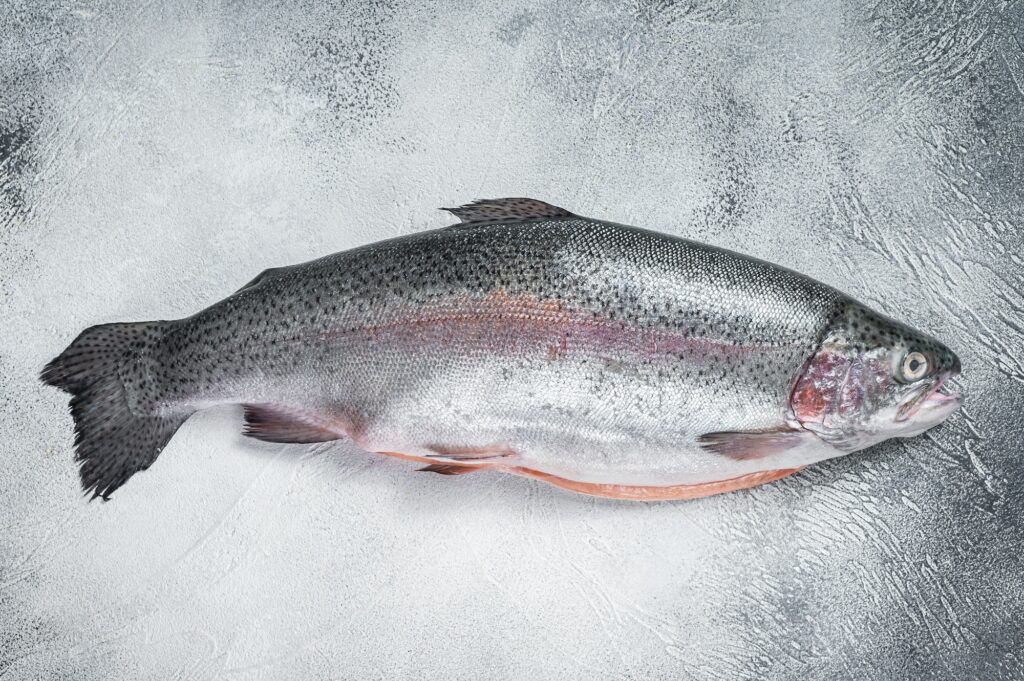
Channel Catfish
The channel catfish is Big Bear Lake’s most popular type of fish. It lives in deeper waters and feeds on small freshwater crustaceans, aquatic insects, other fish larvae, and other small invertebrates. They are easy to identify because they have a pointed snout, pectoral fins, and two barbels on their chin.
When fishing for channel catfish, it is best to use various methods, including fly fishing and bait-casting. When using bait, it is essential to remember that the bait’s size and type will determine the catch’s success. Some standard baits can be used for worms, crickets, and worms wrapped in liver or cheese.
Best bait: worms
Best time to fish: at night and early in the morning
Tips: use live bait, cast into deep holes, and have patience. The channel catfish is a large fish (up to 50 pounds and 4 feet long) that can be difficult to reel in, so it is important to have a strong fishing line.
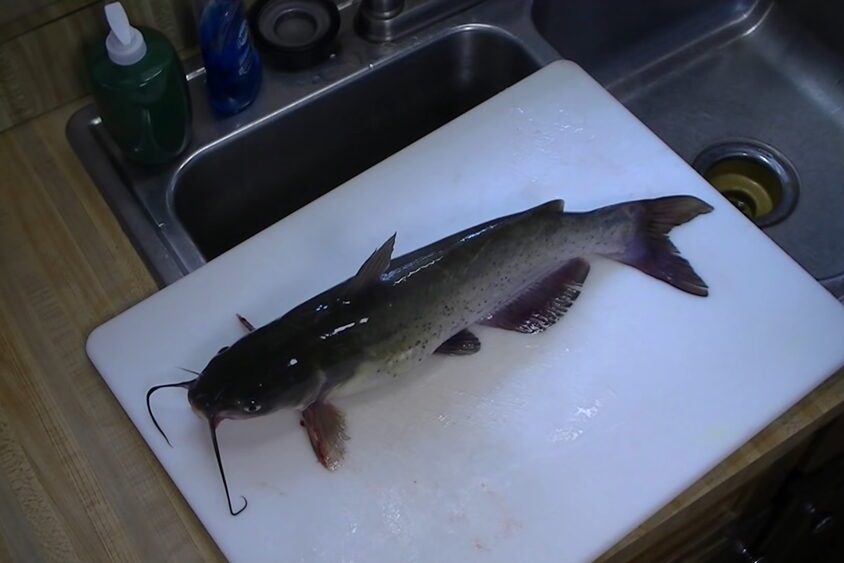
Small and Large-mouth Bass
The large-mouth bass is the most common species of fish found in Big Bear Lake. The large-mouth bass is a large, dark-colored fish that can reach up to two feet long. The average size caught during fishing trips is between 12 and 15 inches. The large-mouth bass is a carnivore fish that feeds on other fish, frogs, and insects.
The small-mouth bass is another popular game fish species in Big Bear Lake. Small-mouth bass is smaller than large-mouth bass and has a lighter coloration. The average size caught during fishing trips is between 10 and 12 inches long. Small mouth bass feed on other fish and are not as aggressive as large-mouth bass.
Best bait: Worms, night crawlers, and crickets.
Best time to fish: Early morning and late evening.
Best spots: Anywhere around the lake. Fish in shallow water near the shoreline and deep waters offshore.
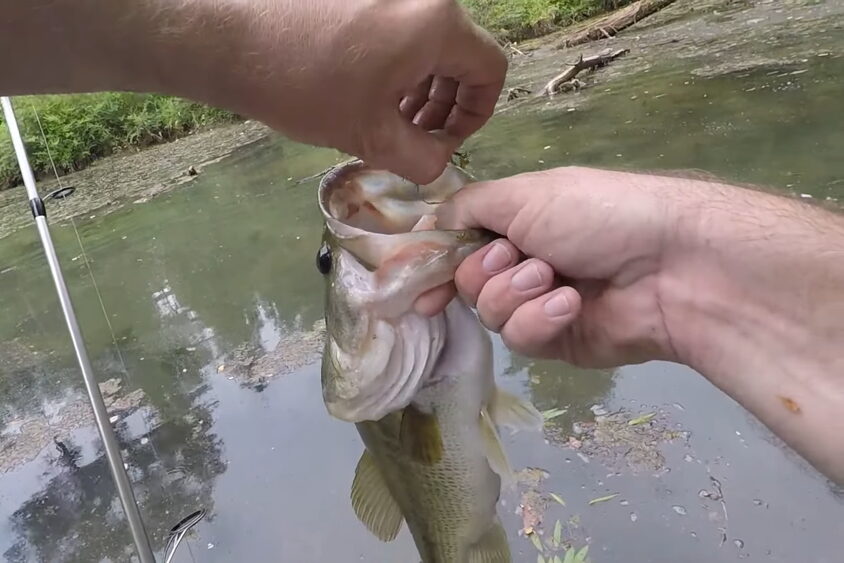
Crappie
Crappie fishing is also one of the most popular types of fishing at Big Bear Lake. Crappies are easy to catch and can be found in many different spots on the lake, but they are usually most abundant in the shallow, clear water near boat ramps and docks.
Crappie is a fish that can be found in lakes all over California. They are usually found around docks and submerged cover. You can catch them by dipping meal worms or wax worms in the water. Crappie can also be found in schools, so be prepared to reel in a lot of fish!
Best bait: Wax Worms
Best time to fish: Early morning, late afternoon, and early evening.
Best spots: The best spots to fish for crappie are near docks, boat ramps, and submerged objects.
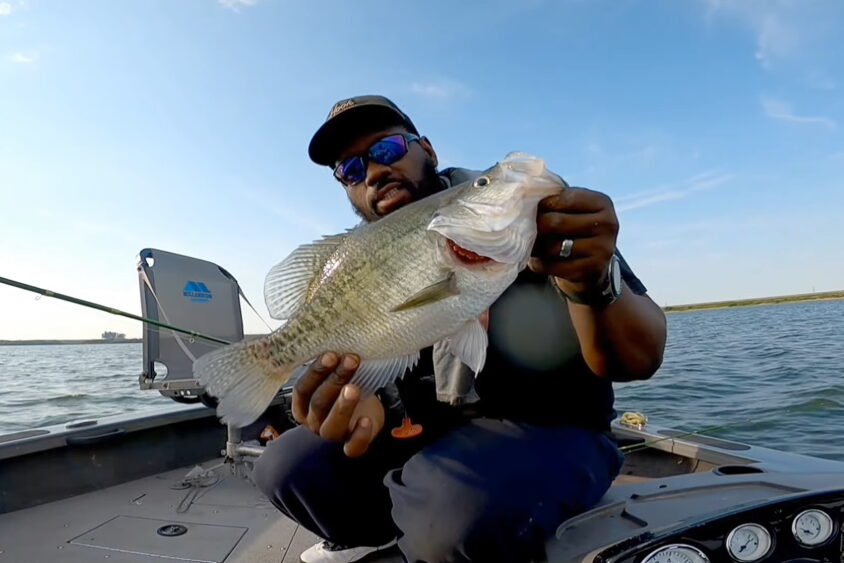
Bluegill
The Bluegill fish is a small freshwater fish found in lakes and ponds. Bluegill fish are located in the lake and can be caught with the same technique as dock fishing. They are usually fished with a night-crawler and bubble on the hook to attract them. Casting out 10-15 feet from shore is generally adequate for bluegill fishing. The lake contains a variety of pan-fish species, and the majority of them will be present alongside the bluegill, so you won’t need to drastically change your strategy to capture any of them.
Best bait: Night crawlers and bubble
Best time: Late evening to early morning.
Best Location: The south side of the lake
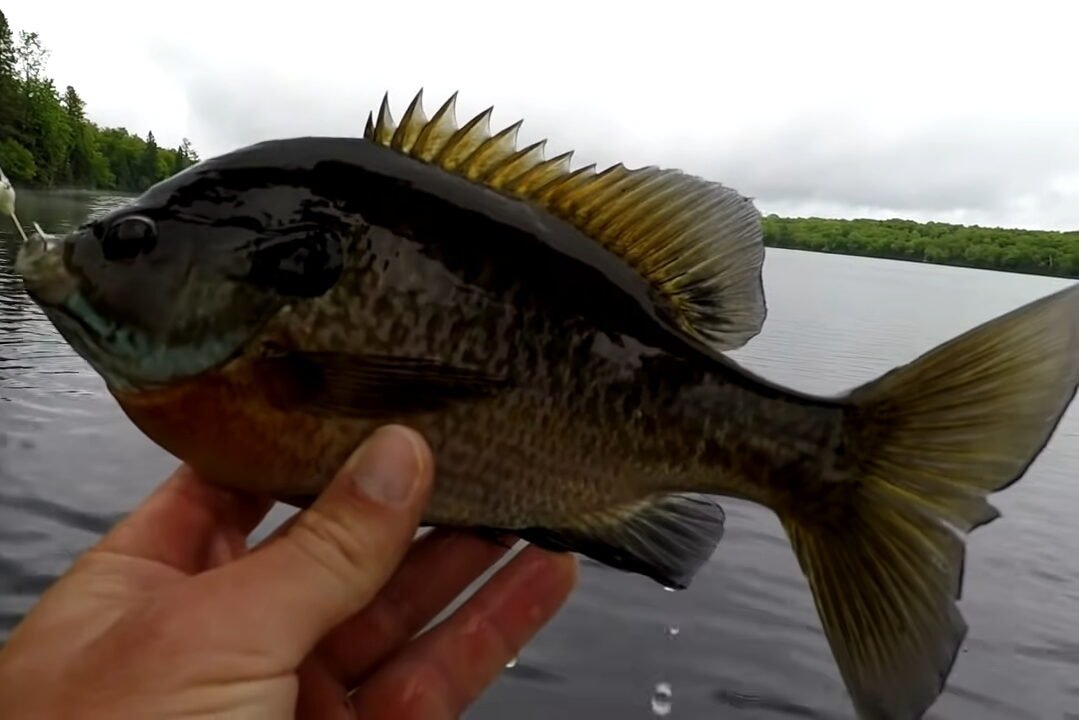
Best Fishing Spots at Big Bear Lake
Fishing is a great way to spend a day in the mountains, and all of these spots are easily accessible from Big Bear Boulevard or North Shore Drive. The East end of Big Bear Lake at Stanfield Cutoff is an excellent place to start fishing and then work your way West to Windy Point. The Bear Valley Dam, located West of Big Bear Lake, is also a good spot for fishing.
For trolling, the Rainbow Trout Triangle from Eagle Point to Lagonita Point to the Solar Observatory or Met calf Bay across the lake to the North Shore are good areas to try. Some other good spots around the lake include East Ramp, Juniper Point, Windy Point, Meadow Park, and Trout Triangle. There are several places to dock your boat, including along the Alpine Pedal Path and Big Bear Marina.
Big Bear Lake fishing Regulations
Before embarking on your Big Bear Lake fishing adventure, it’s crucial to familiarize yourself with the fishing regulations and obtain the necessary permits. The California Department of Fish and Wildlife establishes guidelines to ensure sustainable fishing practices. Anglers must adhere to size restrictions, bag limits, and specific rules outlined by the department. Acquiring the appropriate fishing permit is essential to avoid any legal complications and contribute to the preservation of the lake’s ecosystem.
Attractions near Big Bear Lake
Big Bear Lake is surrounded by numerous attractions that make it a well-rounded destination for visitors. The nearby Big Bear Alpine Zoo offers a chance to witness wildlife up close and learn about local conservation efforts. The Snow Summit and Bear Mountain ski resorts attract visitors during the winter months for skiing and snowboarding adventures. Furthermore, the village of Big Bear Lake offers charming shops, restaurants, and art galleries, providing a vibrant atmosphere for exploration.
Camping and Hiking Opportunities
For nature enthusiasts seeking a deeper connection with the outdoors, Big Bear Lake offers exceptional camping and hiking opportunities. Several campgrounds provide scenic locations for setting up tents or RVs, allowing visitors to immerse themselves in the peaceful surroundings. Hiking trails of varying difficulty levels lead to breathtaking vistas and hidden gems, making it an ideal destination for outdoor adventurers.
Boating and Water Sports
In addition to fishing, Big Bear Lake offers a paradise for boating and water sports enthusiasts. The lake’s calm waters provide an excellent environment for leisurely boat rides and sailing adventures. Visitors can rent boats, paddleboards, and jet skis from local marinas and experience the thrill of gliding across the sparkling waters. Engaging in water sports at Big Bear Lake adds an extra layer of excitement and fun to your visit.
Wildlife Viewing in Big Bear Lake
Big Bear Lake’s natural surroundings are teeming with wildlife, offering ample opportunities for wildlife enthusiasts and photographers. The area is home to diverse species, including black bears, deer, coyotes, and a variety of bird species. Exploring the forests and meadows surrounding the lake allows visitors to observe these creatures in their natural habitats and capture stunning photographs.

FAQs
Does Big Bear Lake have good fishing?
Big Bear Lake is a great place to fish, with various fish species in the waters. Carp fishing can be enjoyable, and bow fishing tournaments are held yearly to help thin the carp population. However, it’s important to remember that there are more than just carp in Big Bear Lake – so don’t limit yourself to just one type of fish!
What’s the best bait for Big Bear Lake?
Big Bear Lake is a popular fishing destination for people in the Southern California area. It is known for its large, healthy fish populations. Jigs and weedless worms are the best baits for fishing in Big Bear Lake because they are not as likely to get caught on tree branches or other underwater obstructions.
Are there any restrictions on fish size and quantity?
Yes, Big Bear Lake has specific regulations regarding fish size and quantity. Anglers must adhere to the size limits and bag limits set by the California Department of Fish and Wildlife. These restrictions help maintain a healthy fish population and sustain the lake’s ecosystem.
What are the best seasons for fishing at Big Bear Lake?
The prime fishing seasons at Big Bear Lake are spring and fall when the water temperatures are optimal for fish activity. However, fishing can still be rewarding during other seasons, depending on the targeted fish species.
What is the average cost of a fishing permit?
The cost of a fishing permit at Big Bear Lake varies depending on factors such as residency status and duration. Prices typically range from $10 to $25 for daily permits and $40 to $50 for annual permits. It’s advisable to check the current permit fees before your visit.

